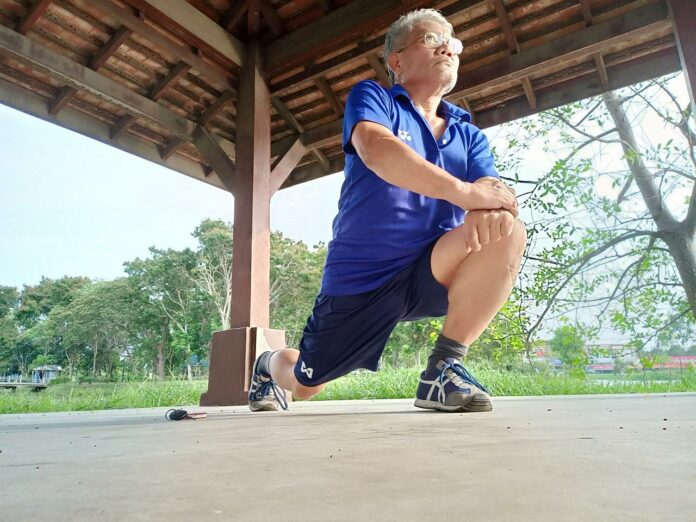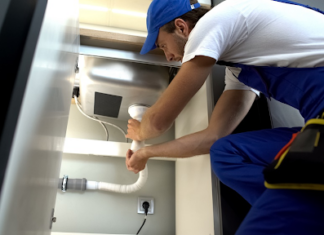Recovering from intense physical activity is essential for maintaining fitness goals. Even if you’re a seasoned athlete, it’s possible to over-train your muscles. When this happens, your body will begin to break down muscle tissue instead of building it back up.
As a result, you’ll lose strength and endurance, and your performance may even decline.
To prevent this, you must carefully monitor your progress and rest when needed. This is especially true after an intensive training session, which can leave you feeling exhausted and sore.
Fortunately, there are many different strategies you can use to recover from an intense workout. The following guide explains active recovery and tips for implementing it into your routine.
What is active recovery?
As the name suggests, active recovery is a form of exercise that helps your body recover from intense physical activity.
Unlike passive recovery, which involves resting completely, active recovery involves light activity that doesn’t put a strain on your muscles.
In most cases, active recovery includes gentle stretches and a warm shower, but it can also involve yoga, swimming, and other forms of movement.
How does active recovery benefit your health?
One of the main benefits of active recovery is that it reduces fatigue. Active recover facilitates blood flow throughout your body, improving your circulation, and helps you feel more energized.
Furthermore, it can reduce muscle stiffness and soreness, allowing you to return to your routine with minimal discomfort.
Active recovery can also be used to help you overcome certain negative patterns. The Vista Pines Health recovery program helps people with troublesome and harmful behaviors recover through various exercise and diet tips.
Additionally, some studies suggest that active recovery can positively impact your health and well-being. According to one study, cycling can reduce women’s anxiety, depression, and stress levels.
Meanwhile, another review indicated that performing cardiovascular exercise can lower your blood pressure and strengthen your heart and lungs.
Are there any risks involved?
While active recovery has many benefits, it isn’t appropriate for everyone. People with chronic illnesses and disabilities may not be able to perform certain movements, which could cause them an aggravation in their condition.
Some people may also experience pain or discomfort after exercising. Talk to your physician if you’re not sure if active recovery is for you. They can assess your health, discuss your fitness goals, and determine the path forward.
How often should I incorporate active recovery into my routine?
As mentioned, active recovery is typically performed after strenuous exercise. However, you may combine it with other types of recovery to maximize your results.
You may also prioritize active recovery sessions, especially if you feel fatigued or sore.
Can you complete active recovery alone?
You don’t necessarily need to attend a class, hire a personal trainer, or join a team to practice active recovery.
All you need is access to an open area, such as a park or a gymnasium. However, it’s usually better to work out with someone else.
Working out with a friend or a loved one may encourage you to push yourself harder than you otherwise would, helping you achieve your fitness goals faster.
Are there any alternatives?
Yes. Passive recovery can include everything from a warm bath to drinking plenty of fluids. Of course, you can also focus on your diet by consuming healthy foods that can aid your recovery.
However, active recovery can provide you with a more comprehensive approach that addresses all aspects of your well-being.
Is active recovery safe for everyone?
In most cases, active recovery is completely safe. However, there are some exceptions.
People who have recently undergone surgery or received medical treatment should avoid participating in any activity without consulting their physician.
Additionally, people with severe arthritis may find it difficult to move their joints, which can limit the effectiveness of active recovery.
What next?
Once you understand how active recovery works, you can incorporate it into your routine. However, you may want to consult with a professional before starting.
They can assess your current fitness level and design a personalized plan that maximizes your health and well-being. They may also recommend alternative recovery methods, such as massage therapy, to allow you to enjoy full benefits of active recovery.
Here Are 10 Benefits of Active Recovery
1. Improves Blood Circulation
Active recovery improves blood flow throughout your body. Better circulation allows oxygen-rich blood to travel to your muscles, where it delivers nutrients that promote healing.
In turn, your muscles will become less sore and more flexible, allowing you to enjoy improved flexibility and range of motion.
2. Improves Muscle Flexibility
During intense workouts, your muscles contract to protect your bones and organs. As a result, they get tight.
After completing an active recovery session, you’ll notice that your muscles are more relaxed and flexible.
3. Reduces Fatigue
When you’re active, your body produces endorphins, which boosts your mood and enhances your sense of well-being. At the same time, your heart rate and blood pressure decreases, making you more alert and energetic.
4. Enhances Your Sleep Quality
Your body releases growth hormones during sleep, which repair your muscles and replenish your energy stores. Active recovery improves the quality of your sleep, allowing you to wake up feeling refreshed and rejuvenated.
5. Increases Cardiovascular Endurance
After a workout, your heart and lungs become stronger and more efficient. Active recovery can lead to an increase in your overall cardiovascular endurance, while you are taking a break from the gym.
6. Boosts Metabolism
When your body expends energy, it needs to refuel. To do so, your metabolism revs up, which leads to more calorie burning.
7. Decreases Inflammation
Exercise causes inflammation, which leads to the swelling and pain in muscles and joints. However, this process helps your body heal and become stronger, reducing your risk for injury.
8. Strengthens Bones and Muscles
When you participate in physical activity, your muscles and bones get stronger, which helps to prevent injuries. Furthermore, regular exercise also lowers your risk of osteoporosis.
9. Improves Flexibility
Flexible joints allow you to perform a wider range of movements, improving your overall performance.
10. Boosts Energy Levels
Regular exercise increases your metabolic rate, allowing you to burn additional calories throughout the day. It also reduces stress, which enhances your mental clarity and makes you feel happier.
Final Words
The benefits of active recovery are numerous. Incorporating these activities into your daily routine will maximize your strength, flexibility, and stamina. More importantly, you will get to improve your overall health.









